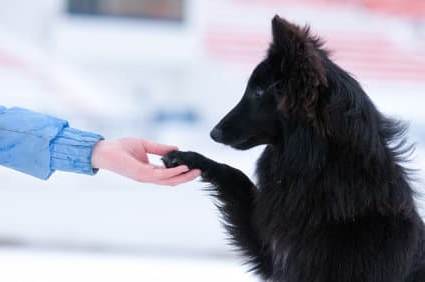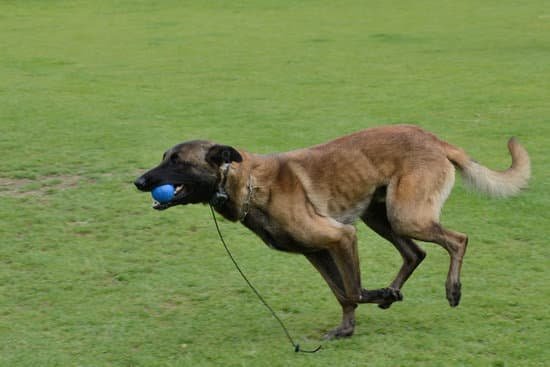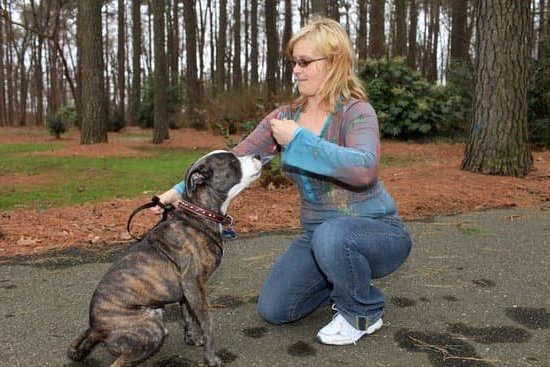Are you wondering how to train dogs in the most effective way possible? Dog training plays a crucial role in shaping a well-mannered and well-behaved pet.
In this article, we will explore the importance of dog training and provide valuable information on finding the right training method for your dog’s personality, basic training commands every dog owner should know, using positive reinforcement techniques, addressing common behavior issues, advanced training techniques, tips for training puppies, the role of consistency and patience, as well as the benefits of professional dog training programs.
It is essential to understand that proper training not only ensures the safety of your pet but also strengthens the bond between you and your furry companion. Whether you have a new puppy or an older dog, finding the right training method that caters to their individual personality is key to successful learning and development. By learning about different methods and understanding your dog’s unique needs and behaviors, you can set them up for success in their training journey.
Throughout this article, we will dive into the various aspects of dog training to provide you with valuable insights on empowering owners to train happy and well-behaved dogs. From basic commands to advanced techniques, we will equip you with the knowledge needed to make your four-legged friend a joy to be around. Let’s embark on this journey together and discover how to successfully train dogs.
Finding the Right Training Method for Your Dog’s Personality
Dogs, like people, have their own unique personalities and temperaments. As such, it’s important to find the right training method that will work best for your dog. Different dogs may respond better to different approaches, so it’s essential to understand your dog’s personality before starting any training regimen.
One popular approach to finding the right training method is through positive reinforcement. This method involves rewarding your dog for good behavior, which can help in reinforcing desired actions. Positive reinforcement has been proven to be an effective and humane way of training dogs, as it encourages them to repeat behaviors that result in rewards.
Another important factor in finding the right training method for your dog is understanding their breed. Different breeds have different needs when it comes to training. For example, while some breeds may be highly energetic and require constant physical activity as part of their training, others may be more independent and need a different approach.
Using Positive Reinforcement Techniques in Dog Training
| Benefit | Explanation |
|---|---|
| Increases motivation | Dogs are motivated to perform desired behaviors in order to receive a reward. |
| Builds trust | Positive reinforcement helps build a strong bond between the owner and the dog based on trust and cooperation. |
| Reduces fear and anxiety | Reward-based training can help reduce fear or anxiety-related behaviors in dogs. |
Basic Training Commands Every Dog Owner Should Know
When it comes to training your dog, there are several basic commands that every dog owner should be familiar with. These commands not only help you establish a line of communication with your furry friend but also ensure their safety and well-being. Here are some essential training commands that you should teach your dog:
- Sit: Teaching your dog to sit on command is one of the most fundamental skills. It can be used in various situations such as before meals, when greeting guests, or at the vet’s office.
- Stay: This command is crucial for keeping your dog safe in potentially dangerous situations. It teaches them to remain in one place until given another command.
- Come: Training your dog to come when called is essential for their safety and allows you to keep them under control, especially when off-leash.
- Down: The “down” command is useful for getting your dog to lie down and relax, whether it’s during a walk or at home.
It’s important to remember that consistency and patience are key when teaching these commands. Using positive reinforcement techniques such as treats and praise can help motivate your dog to learn and obey these essential commands.
In addition to teaching these basic commands, it’s crucial to practice them regularly in different environments and situations. This will help solidify your dog’s understanding of the commands and ensure they respond reliably in any scenario. Understanding how to train dogs effectively will not only make your life easier as a pet owner but also strengthen the bond between you and your canine companion.
Using Positive Reinforcement Techniques in Dog Training
Understanding Positive Reinforcement
Positive reinforcement is a highly effective training technique that involves rewarding your dog for good behavior. This can include verbal praise, treats, toys, or affectionate gestures. The concept behind positive reinforcement is to encourage and strengthen the desired behavior by providing a pleasant outcome.
Implementing Positive Reinforcement in Training
When using positive reinforcement techniques in dog training, it’s important to ensure that the reward is given immediately after the desired behavior occurs. This helps the dog make the connection between their action and the positive consequence. Consistency is key when implementing this approach, as it allows your dog to understand what behavior is being rewarded.
The Benefits of Positive Reinforcement
Positive reinforcement not only encourages good behavior but also fosters a strong bond between you and your dog. By focusing on rewarding desirable actions rather than punishing unwanted behaviors, you are creating a positive and enjoyable learning experience for your pet. This approach promotes confidence and trust, making the training process more effective and enjoyable for both you and your furry friend.
By using positive reinforcement techniques in dog training, you can effectively teach your canine companion new behaviors and commands while strengthening your relationship with them. If you’re unsure how to train dogs using this method, consider seeking guidance from professional trainers who specialize in positive reinforcement-based techniques. With patience and consistency, you can help your dog develop into a well-behaved and happy member of your family.
Addressing Common Behavior Issues Through Training
Training your dog is not just about teaching them basic commands, but also addressing common behavior issues that may arise. One of the most common behavior issues that dog owners encounter is excessive barking. This can be a result of boredom, anxiety, or territorial instincts. To address this issue, consistent training and positive reinforcement techniques can be used to redirect their focus and provide an alternative behavior.
Another common behavior issue is leash pulling during walks. This can make walks frustrating for both the owner and the dog. Using positive reinforcement such as treats and praise can help train your dog to walk calmly on a leash. It’s important to remember that addressing these behavior issues requires patience and consistency in training.
Separation anxiety is another issue that many dogs struggle with. They may display destructive behaviors when left alone, such as chewing furniture or excessive barking. Training methods such as desensitization training and creating a safe space for your dog can help alleviate separation anxiety.
Understanding how to train dogs to address common behavior issues not only improves their behavior but also strengthens the bond between you and your pet.
| Behavior Issue | Training Methods |
|---|---|
| Excessive Barking | Consistent training and positive reinforcement techniques |
| Leash Pulling | Positive reinforcement such as treats and praise |
| Separation Anxiety | Desensitization training and creating a safe space for your dog |
Advanced Training Techniques for More Challenging Dogs
Understanding the Challenges
Some dogs may exhibit more challenging behavior, such as aggression, fearfulness, or high energy levels. It’s important to recognize that these behaviors can be more difficult to address and may require advanced training techniques. Understanding the root cause of these behaviors is crucial in developing an effective training plan.
Seeking Professional Help
For dog owners dealing with particularly challenging behavior in their pets, seeking the help of a professional dog trainer or behaviorist may be necessary. These experts have the knowledge and experience to work with difficult dogs and can provide personalized training plans tailored to the specific needs of the animal.
Utilizing Behavior Modification Techniques
Advanced training techniques for challenging dogs often involve behavior modification strategies. This may include counter-conditioning, desensitization, and impulse control exercises to help the dog overcome their issues. Positive reinforcement is key in these techniques, as it helps to build trust and improve the dog’s overall behavior.
When facing challenges with training a difficult dog, patience and persistence are essential qualities for any owner. By utilizing advanced training techniques and seeking professional guidance when needed, even the most challenging dogs can make significant progress towards more desirable behavior.
Training Tips for Puppies
Puppies are like sponges, soaking up information and learning from their environment. It’s during the early stages of a puppy’s life that dog owners have the opportunity to set a strong training foundation. Properly training a puppy is crucial in creating a well-behaved and obedient adult dog. Here are some essential training tips for puppies:
- Start with basic commands: The first step in training a puppy is to teach them basic commands such as sit, stay, come, and down. These commands create a solid foundation for more advanced training later on.
- Use positive reinforcement: Puppies respond well to positive reinforcement techniques such as treats, praise, and toys. When they exhibit good behavior or successfully follow a command, be sure to reward them immediately to reinforce the behavior.
- Establish a routine: Consistency is key when it comes to puppy training. Establishing a consistent daily routine for feeding, potty breaks, playtime, and training sessions will help your puppy learn what is expected of them.
It’s important to remember that puppies have short attention spans and may not grasp commands right away. Patience and consistency are crucial when training puppies. It’s also beneficial to start socializing your puppy at an early age by exposing them to different environments, people, and other animals. By following these tips and being patient with your pup, you’ll be laying the groundwork for a well-behaved and well-adjusted adult dog.
With the right approach and knowledge of how to train dogs effectively at this young age, owners can ensure that their puppies grow into happy, confident, and obedient companions.
The Role of Consistency and Patience in Successful Dog Training
Consistency and patience play a crucial role in successful dog training. Dogs, like humans, thrive on routine and predictability. By consistently enforcing rules and commands, you are establishing clear boundaries for your dog to follow.
This helps them understand what is expected of them and reduces confusion, leading to faster and more effective learning. Whether you are teaching basic commands or addressing specific behavior issues, being consistent in your training approach can make a significant difference in how quickly your dog grasps the concepts.
It’s important to remember that every dog is unique and may require different amounts of time and repetition to learn new behaviors. This is where patience comes into play. Some dogs may pick up on commands quickly, while others may take longer to understand what is being asked of them.
As a responsible dog owner, it’s essential to remain patient throughout the training process. Rushing or becoming frustrated with your dog can lead to setbacks in their learning journey. Instead, approach each training session with a calm and patient demeanor, and celebrate small victories along the way.
To effectively train your dog, consistency should extend beyond just training sessions. It should also be applied to daily routines, rules, and interactions with your pet. Consistently reinforcing positive behaviors through praise or rewards while gently correcting unwanted behaviors will help solidify your dog’s understanding of what is acceptable in various situations.
In turn, this will lead to well-behaved and happy dogs who thrive on structure and consistency. Understanding how to train dogs with consistency and patience will ultimately result in a strong bond between you and your furry companion as well as an obedient and well-mannered pet.
The Benefits of Professional Dog Training Programs
For many dog owners, professional dog training programs can be incredibly beneficial in helping their furry companions become well-behaved and a joy to be around. These programs are designed and conducted by experienced trainers who understand the ins and outs of canine behavior, making them highly effective in addressing specific training needs.
By enrolling your dog in a professional training program, you can ensure that they receive the proper guidance and instruction to become the best possible version of themselves.
One of the key benefits of professional dog training programs is the personalized approach that is tailored to your dog’s individual needs. These programs take into consideration your dog’s personality, breed, age, and any specific behavior issues they may have, allowing for a customized training plan that is most effective for your furry friend. This personalized approach ensures that your dog receives the attention and care they need to thrive in a training environment.
Additionally, professional dog training programs often focus on positive reinforcement techniques, which have been proven to be effective in promoting good behavior in dogs. Trainers use rewards such as treats, praise, and playtime to encourage desired behaviors, creating a positive learning experience for your dog.
This not only helps them learn how to behave appropriately but also strengthens the bond between you and your pet. If you’re wondering how to train dogs effectively while maintaining a positive relationship with them, professional training programs are an excellent option to consider.
Conclusion
In conclusion, training your dog is an essential part of responsible pet ownership. By understanding the importance of dog training and finding the right method for your dog’s personality, you can set a strong foundation for a happy and well-behaved companion. Basic training commands, positive reinforcement techniques, and addressing common behavior issues are crucial aspects of how to train dogs effectively.
Consistency and patience play a significant role in successful dog training. It’s important to remember that every dog learns at their own pace, and it may take time to see progress. However, with dedication and perseverance, you can help your furry friend become a well-mannered member of your family.
For those facing more challenging situations or seeking additional guidance, professional dog training programs can provide valuable support. These programs offer expert knowledge and tailored approaches to address specific behavioral issues or advanced training needs. By empowering owners with the tools and knowledge they need, professional programs contribute to creating a lifelong bond between dogs and their owners.
Ultimately, the goal of dog training is to foster a harmonious relationship between you and your pet. With the right techniques, consistency, and patience, you can transform your canine companion into a well-behaved member of your family. Understanding how to train dogs is not only beneficial for their behavior but also for strengthening the bond between humans and their furry friends.
Frequently Asked Questions
How Do You Train a Dog for Beginners?
Training a dog for beginners involves patience, consistency, and positive reinforcement. Start with basic commands like sit, stay, and come. Use treats to reward good behavior and practice regularly in short sessions.
What Are the 5 Golden Rules of Dog Training?
The five golden rules of dog training include establishing leadership, being consistent with rules and expectations, using positive reinforcement, practicing patience, and understanding your dog’s needs and behavior. These principles help build a strong bond between you and your dog.
How Can I Train My Dog by Myself?
Training your dog by yourself is possible with dedication and the right approach. Start with basic obedience training, use treats or toys as rewards, and be consistent with your commands. Seek guidance from reputable resources or consider professional training if needed.

Welcome to the blog! I am a professional dog trainer and have been working with dogs for many years. In this blog, I will be discussing various topics related to dog training, including tips, tricks, and advice. I hope you find this information helpful and informative. Thanks for reading!





